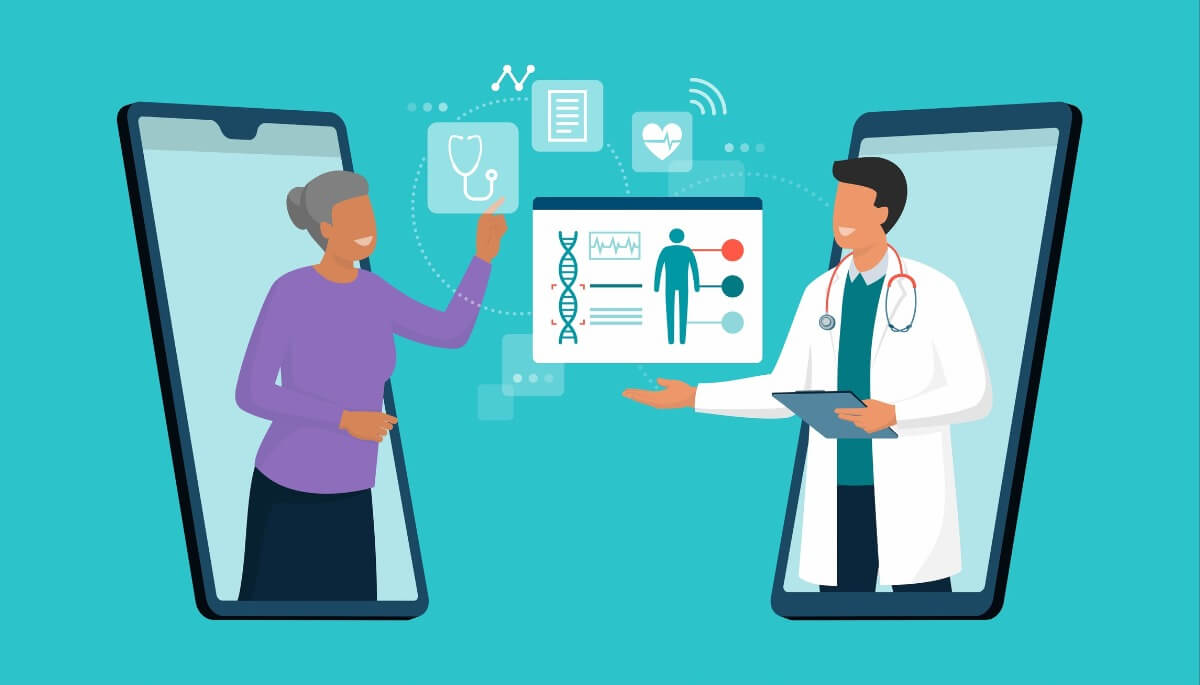In 2023 (almost 2024), it’s pretty much a fact that text messaging has become the most preferred way to communicate for nearly everyone, regardless of demographics. This is true for nearly every type of communication purpose, from businesses and private organizations to personal texts between friends and family, and yes, for healthcare. Consider these statistics:
- 98% of U.S. adults own a cellphone, and the vast majority use it for texting
- 85% of customers preferred to get texts over phone calls or emails in 2022
- 71% of consumers signed up to receive texts from businesses in 2023
- 98% of consumers who text expect healthcare organizations to follow suit and provide texting
Text messaging, when done right, has become a trusted, must-have medium to link healthcare practices and their patients faster, easier, and more conveniently.
In this article, we’ll look at the advantages of texting over phone calls and emails and how to ensure you never send a healthcare-related text message to the wrong individual. Texting can be a safe and secure option for you to connect with patients, drive higher patient satisfaction, improve workflows and enable you to elevate the patient care experience.
What are the advantages of text messages over emails and phone calls?
If you’re not currently texting your patients, you’re missing out on a rich opportunity to reach patients more effectively and efficiently while decreasing manual workloads. Texting is quicker, easier, and more convenient, and most importantly of all, most patients vastly prefer it. Today’s patients expect to be able to text their medical, dental, or vision healthcare provider.
Consider these upsides texts have over emails and phone calls:
- Texting is 10x faster than a phone call.
- SMS (short message service) texts have nearly a 20% open rate, compared to 4% for emails.
- 95% of texts are read and responded to within 3 minutes of being received.
- Texting avoids intrusive phone calls and notifications to patients who are working or otherwise occupied
It’s obvious you can save your admin team a lot of time and improve patient engagement by using texting to send appointment reminders, recall notices, digital intake, payment reminders, and two-way texting.
Why do I need to avoid sending a healthcare-related text message to the wrong person?
Two reasons primarily. The Health Insurance Portability Act (HIPAA) requires that providers safeguard patients’ sensitive health information. Secondly, HIPAA’s security rule stipulates that healthcare providers adopt measures to ensure the security and privacy of each patient’s protected health information (PHI) including, but not limited to, a patient’s EHR (Electronic Health Record). This includes HIPAA-compliant text messaging.
As long as you adopt the appropriate security measures when discussing, sharing, or transmitting patient information via texting, you can minimize your practice’s risk and liability under the HIPAA security rule. This is a good thing because just a single breach of HIPAA compliance can run up to nearly $64,000 per day.
What precautions can I take to avoid sending the wrong health-related text message (containing PHI) to someone?
1. Don’t text from a non-secure messaging system
Only use a HIPAA-compliant messaging service through a secure communications platform specifically designed for patient-provider communication. Standard texting services, SMS, and personal smartphones are inherently insecure and should not be used to text patients. A secure text messaging platform will have end-to-end encryption, which prevents text messages from being intercepted in transit or storage.
2. Never text patients who haven’t opted-in to receive texts
To ensure that only patients who actually want to receive text messages from your office, make sure you have a simple process to ask each patient about their communication preferences. Ideally, this would happen during intake when patients electronically receive a secure link to complete intake forms prior to care. But you can also send them a text or email to update their preferences or at check-in or check-out.
3. Use access controls to minimize who can send texts to patients
A secure patient messaging solution has features that practice managers can use to assign login credentials to authorized staff members to assist with authentication. This limits who has access to your patient texting system and prevents practice employees who don’t need access from inadvertently sending a text to the wrong patient.
4. Always gain consent before discussing a patient’s PHI via two-way texting
Two-way texting allows you and your patients to easily communicate in real-time quickly and easily without ever having to make a phone call or send an email. It’s great for when patients have a question, want to reschedule, or need more instructions. However, if a patient texts you a question about or wants to discuss their PHI with your team, it’s critical that you obtain their consent before proceeding. Consent protects your patients’ privacy while ensuring your practice minimizes risk and liability related to HIPAA regulations.
Ensure your messaging software includes a built-in consent tool that prompts staff members to warn patients that the text conversation may be insecure. Ensure team members gain a patient’s consent before proceeding. If the patient opts not to give consent, you can always help them by directing the conversation offline, such as a phone call, email, or in-person discussion.
Key Takeaways
Take full advantage of the opportunity and myriad benefits of offering easy and convenient text message communication to your patients through a secure messaging solution. But make sure you text responsibility so you never send a healthcare-related message to the wrong patient. This can be achieved by adopting secure patient messaging software and patient texting best practices that will help keep text messages HIPAA-compliant while protecting the privacy and security of your patients’ healthcare data.

Want to know more about how you can reduce your practice’s risk and liability when texting, emailing, and speaking with patients? Download our free guide, “Become a Text and Email Compliance Guru.”
Read the Guide


